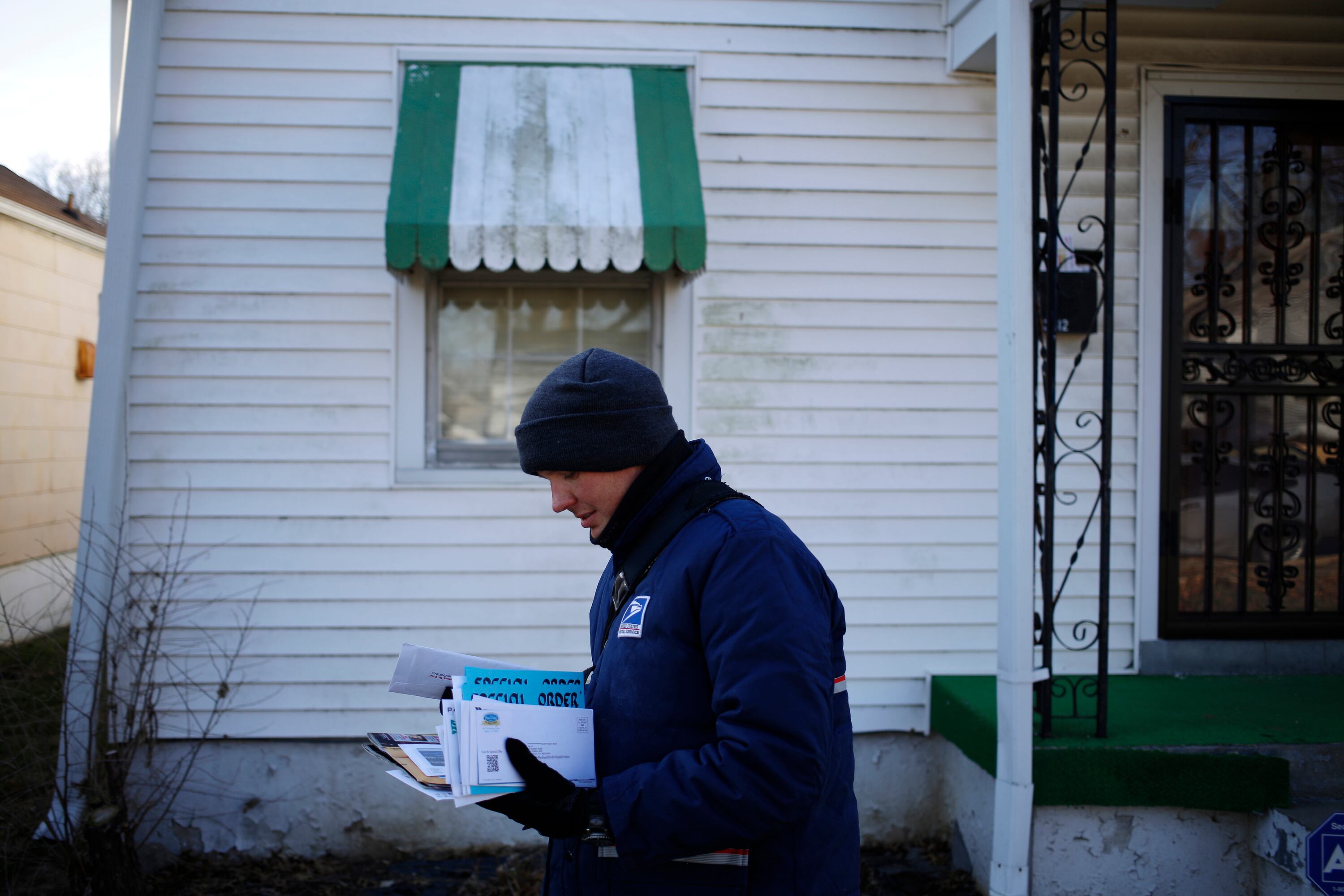The Postal Service saw controllable income of $1.1 billion in the first quarter of fiscal 2015, fueled by record numbers of package deliveries, according to financial information released by the agency Feb. 6.
But after factoring in the Postal Service's obligation to prepay for retiree health benefits and fund its worker compensation fund, the service shows a net loss of $754 million.
Joseph Corbett, the chief financial officer at the Postal Service, called it a 'fantastic quarter.
"Though liquidity remains a concern, the Postal Service must begin to make necessary investments to grow our business and address some of the critical vehicle, facility and package handling equipment requirements that have been deferred in recent years," he said.
Recent price increases in several different classes of mail and continued growth in package areas helped drive the increase in revenue. First-class mail, which contains letters and items such as the payment of bills, slowed its decline to just a 1.1 percent drop. The Postal Service now has close to $7 billion in cash on hand for expenses and other costs.
"The Postal Service performed well with regard to revenue generation and cost control during the holiday season," said Postmaster General Megan Brennan said. "To keep the momentum going — and to ensure we are the shipper of choice for our residential and business customers — we will continue to expand customized delivery solutions and package capacity while delivering high levels of service."
The improving financial situation has been the focus of debate between the Postal Service, lawmakers and employee groups. In 2014, the agency reported a $1.4 billion operating in profit, according to a Nov. 14 financial report. But after the Postal Service's obligation to prepay for retiree health benefits and fund its worker compensation fund, the agency showed a net loss of $5.5 billion.
The Postal Service is lobbying lawmakers for a major overhaul, including: removing the requirement that the Postal Service prefund 75 years of retiree health benefits in only about 10 years — to the tune of $5.6 billion a year. Opponents and supporters of reform alike confirm that no other federal organization has that requirement.
USPS would also like the ability to end Saturday letter delivery, while expanding package delivery to the entire week and flexibility to change prices and add new products in the future while closing underused post offices.
Finally, the service wants authorization to further reduce its workforce. The agency has already shrunk by about 320,000 employees since fiscal 2000, but the agency has maintained it needs legislation to let the Postal Service to move from 485,000 career employees to 400,000 over the next few years.
Fredric Rolando, president of the National Association of Letter Carriers, said the Postal Service should not focus on cutting services and should instead focus on growing the Postal Service.
"We hope to work with lawmakers on both sides of the aisle, with the administration and with the new postmaster general to build on the progress achieved in the last Congress, within the mailing industry and among major stakeholders on consensus postal reform that promotes a strong and vibrant Postal Service," Rolando said.





